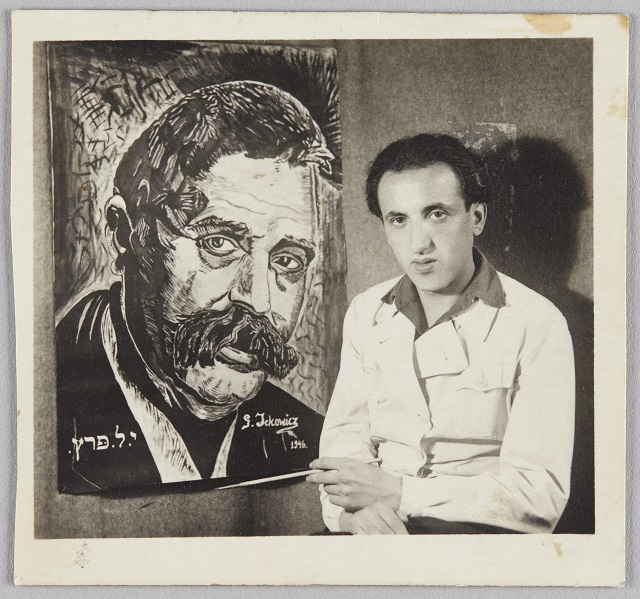The mystery of Gershon Iskowitz
What happened in the life of artist Gershon Iskowitz during the years of 1946–56? With a little help from the AGO archives, we might unravel this mystery.

Polish-Canadian artist Gershon Iskowitz’s life story is a compelling one of survival, revitalization and artistic success. Through his works and well-documented life, we have a lens into his experiences: including the trauma of the Holocaust, the loss of his family, and immigrating and adapting to Canada. But between 1946 and 1956 – crucial years in his life – Iskowitz kept only two official records and few photographs, leaving a gap in his history. With help from art historian and author Dr. Ihor Holubizky and the AGO archives, we may be on our way to solving the mystery.
In the aftermath of the Nazi invasion of Poland in 1939 and along with thousands of others, Iskowitz was imprisoned in concentration camps. From1942 to 1945 he was interned in Auschwitz and Buchenwald where he created art based on themes of the Holocaust as a means of psychological resilience, on scraps of paper that he found after bomb raids. “I did it for myself…I needed it for my sanity, to forget about my hunger,” he wrote.
After liberation, Iskowitz was admitted in October 1945 to the Feldafing Displaced Persons Camp for Jewish concentration camp survivors. He continued to paint there, creating a portrait of the Polish Jewish author and playwright Isaac Leib Peretz (1852–1915), which he painted from a photograph.
Iskowitz remained at Feldafing until he immigrated to Canada in September 1948, where he established himself as an artist. It was during this time that his work turned from focusing on themes of the Holocaust and pre-war life in Poland to landscapes, and then his epic, colourful and life-affirming abstract paintings. His first recorded exhibition was at the 1954 Canadian Society of Graphic Art annual group show, held at the Art Gallery of Toronto (now the AGO). His first solo exhibition was at the short-lived Hayter Gallery, Toronto in 1957.
But what flipped the switch? Art historian Dr. Ihor Holubizky is working to fill in the blanks and the still unanswered questions about the artist’s life between 1946 and 1956. During research for his book, Gershon Iskowitz: Life & Work, and in looking through Iskowitz’s work and personal documents at AGO's E.P. Taylor Library & Archives, Holubizky discovered that the dates on some of Iskowitz’s paintings were inaccurate, even ones dated by Iskowitz himself. He undertook a close examination of style, inscriptions and signatures as Iskowitz did not formalize the current spelling of his name until 1956. Dr. Holubizky is also digging deeper into the reasons for the shift in the style of work that Iskowitz created, with hopes of continuing the story of the life of this prolific artist.
Following his retrospective in 1982 (also held at the AGO), Iskowitz, who had no close family, set up a foundation as his lasting legacy. He wanted his estate to provide financial support to Canadian artists through an annual prize, known as the Gershon Iskowitz Prize. The Prize, which is a partnership with the AGO, has been awarded to artists including Brian Jungen (2010), Valérie Blass (2017) and most recently, Shuvinai Ashoona (2019).
Interested in learning more about the fascinating life and work of Gershon Iskowitz? Join historian Dr. Ihor Holubizky, the AGO’s Curator of Canadian Art, Georgiana Uhlyarik and Sara Angel, Founder and Executive Director at the Art Canada Institute for Gershon Iskowitz: Life & Legacy – a talk about this prolific artist at the Isabel Bader Theatre on April 1.


